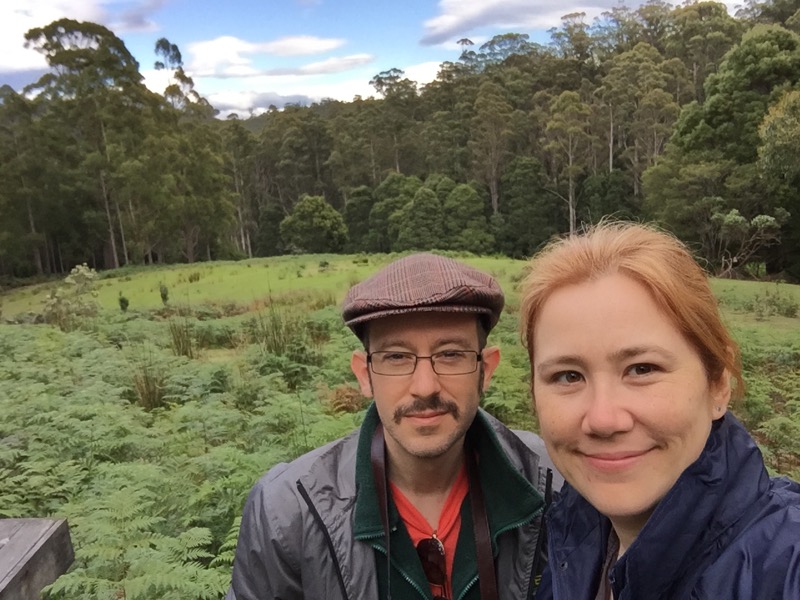
Here we are the next morning, breakfasted and caffeinated.
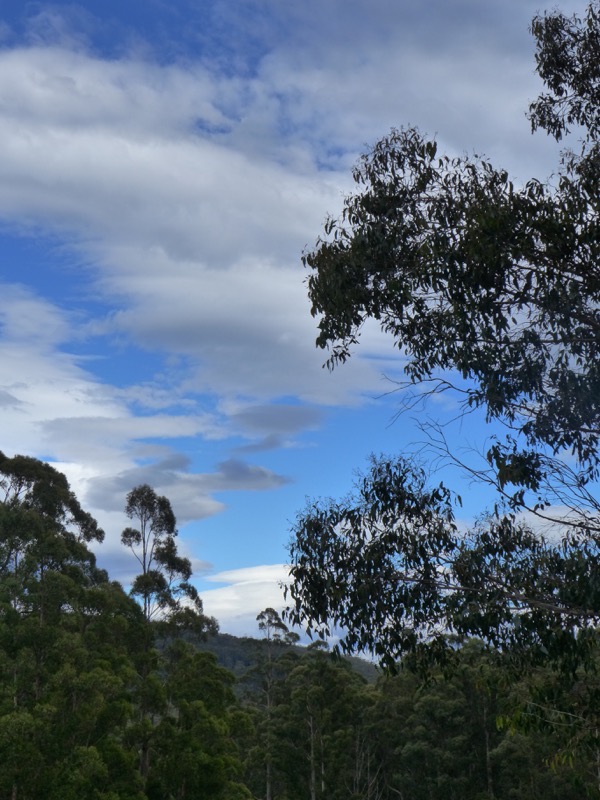
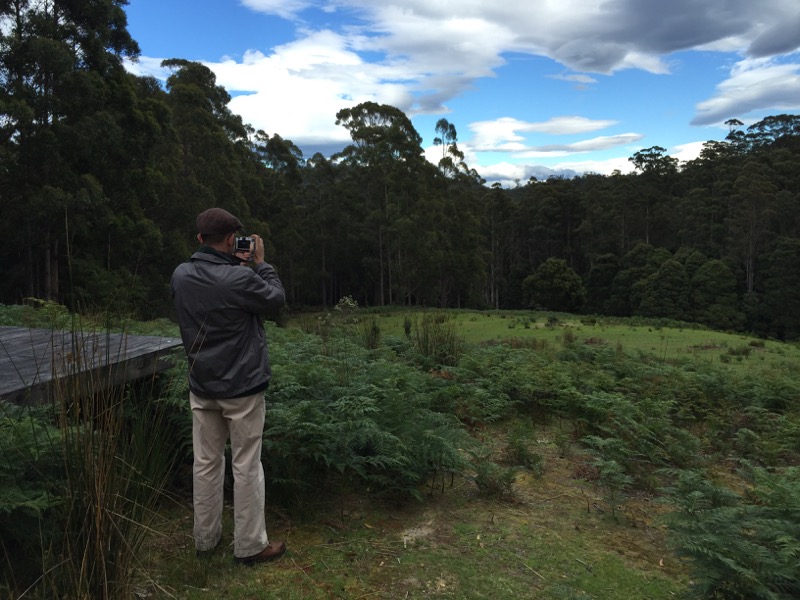
There were some fluffy clouds across the blue sky, and the weather forecast seemed to have a bit of everything in it.
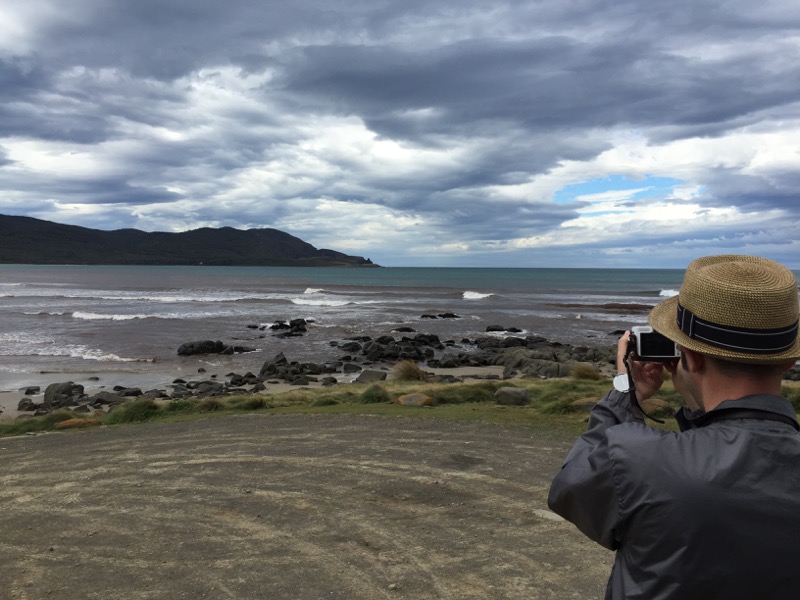
Day Two’s agenda was to walk from Cloudy Bay to East Cloudy Head. Here’s the Snook as we prepared to head down the beach.

This is the photo he took. See the little light speck amongst the green at the water’s edge across the bay? That was our first destination, the 4wd track up to what must be the most secluded campsite in all Australia.

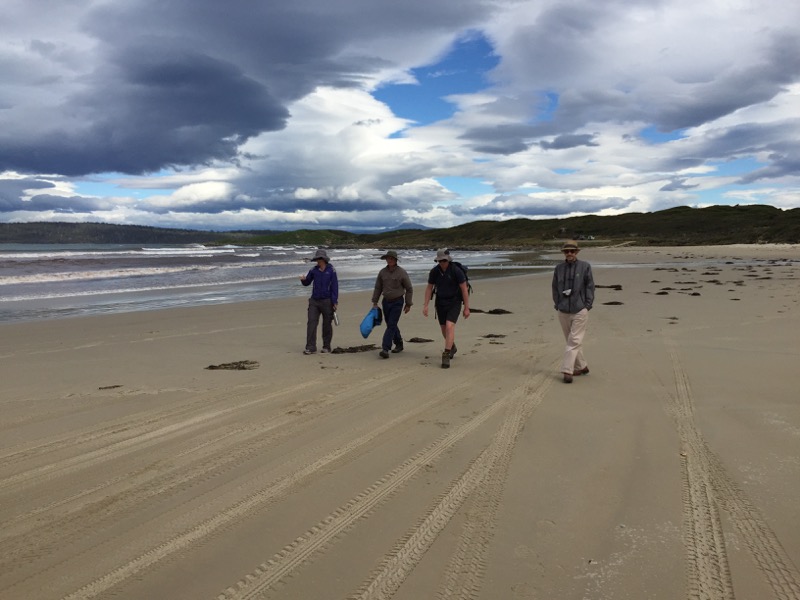

The sky was amazing, if a little foreboding. I knew that this easy, flat part of the walk would end soon enough!
We made it to the campground at the far end of the beach and I went for a quick bathroom break at the camp toilets. (Everyone else was willing to pee behind trees as the need arose, but I just can’t. I managed to survive the previous day’s hike without bursting, but only just.)
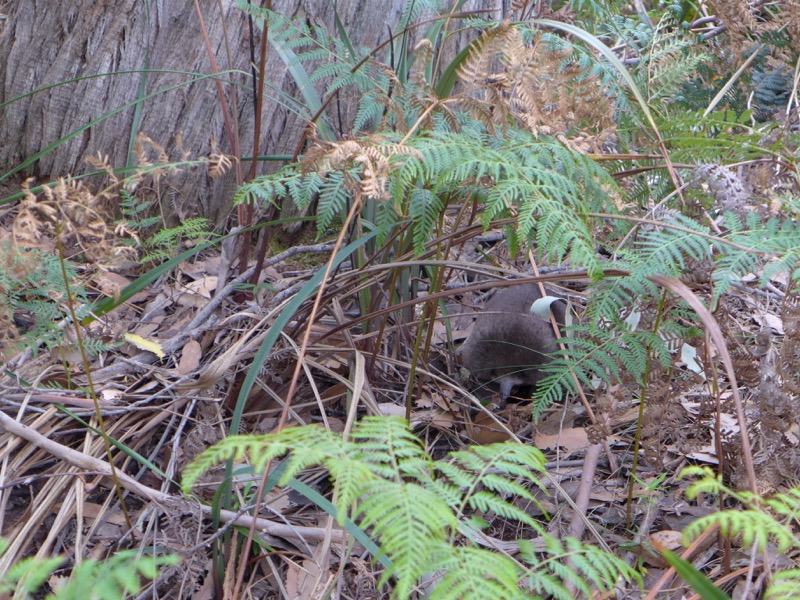
When I came out of the toilet, the Snook took me over to see something he’d discovered nearby. It was a baby echidna!

Baby echidnas are called “puggles,” which is the CUTEST THING EVER.
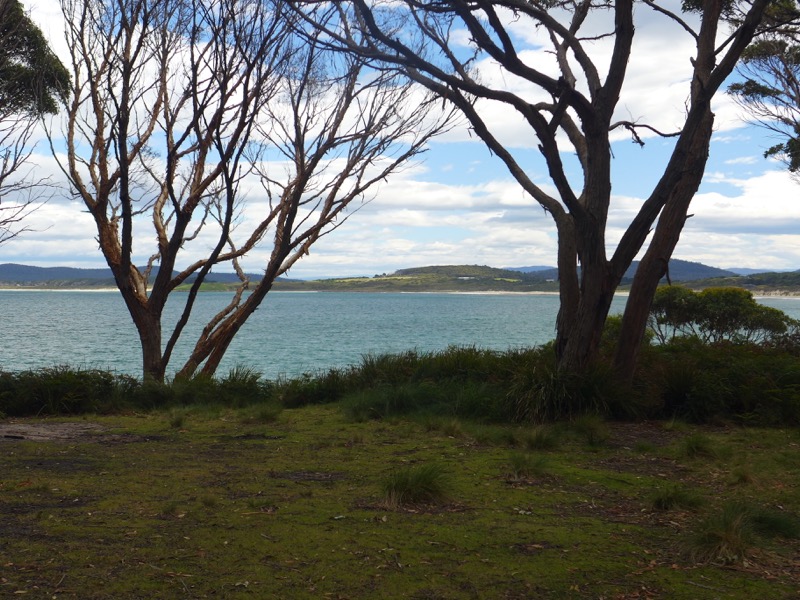
Looking from the campground back across Cloudy Bay to the start of the beach where we began our journey.

The climb began in earnest. I knew this one would be steeper and more difficult, so I found a suitable branch to use as a walking stick. The first section isn’t too bad. The Snook took a panorama looking back behind us towards the beach.
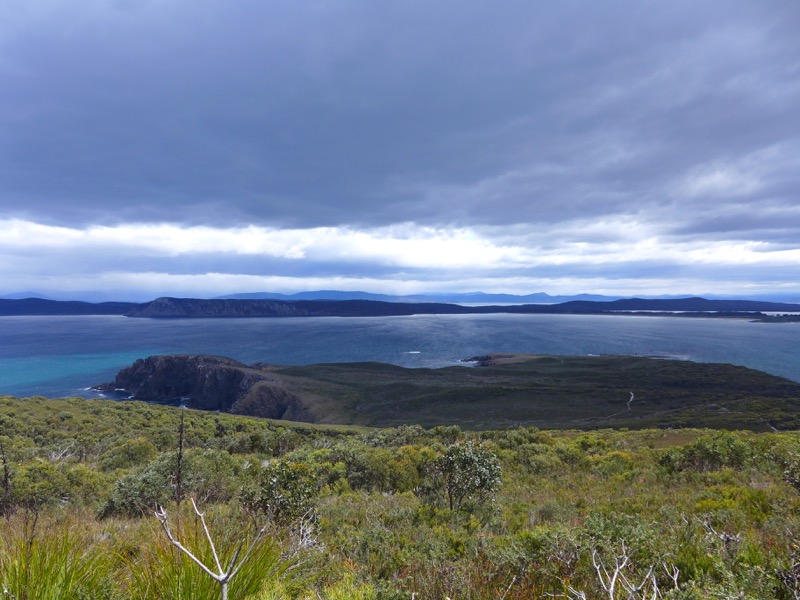
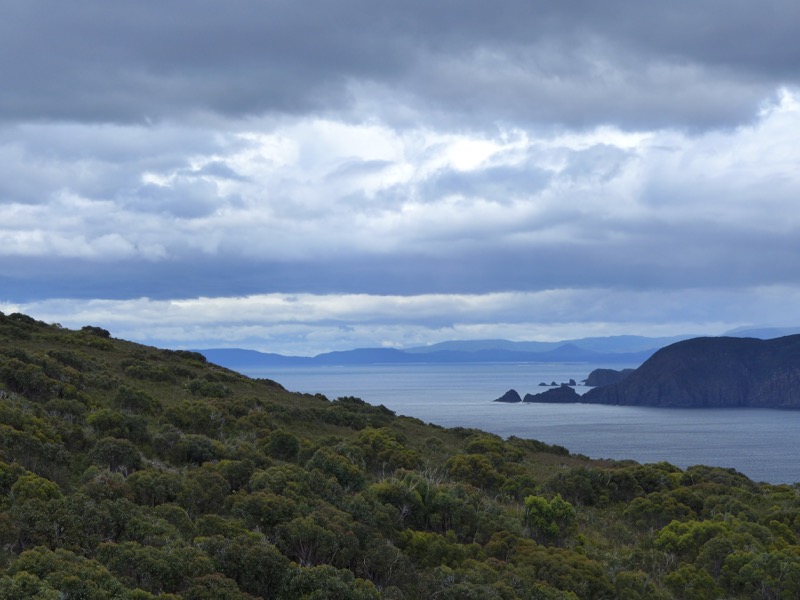
The landscape on the exposed southern side felt almost alpine, while the sheltered bit on the north side felt more rainforesty. The further you go, the more overgrown the trail becomes. (Long pants are definitely recommended.)
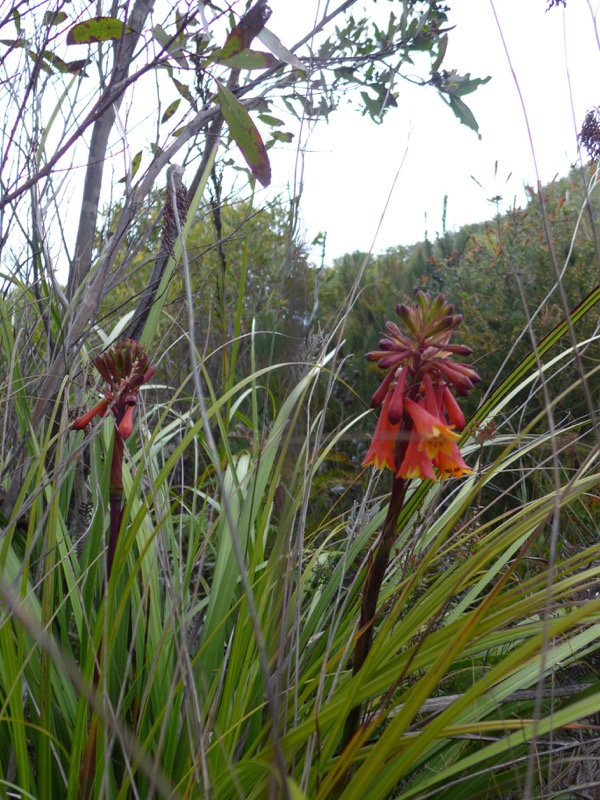
Rodd was again pausing often to take closeups of flowers, rocks, and fungus.
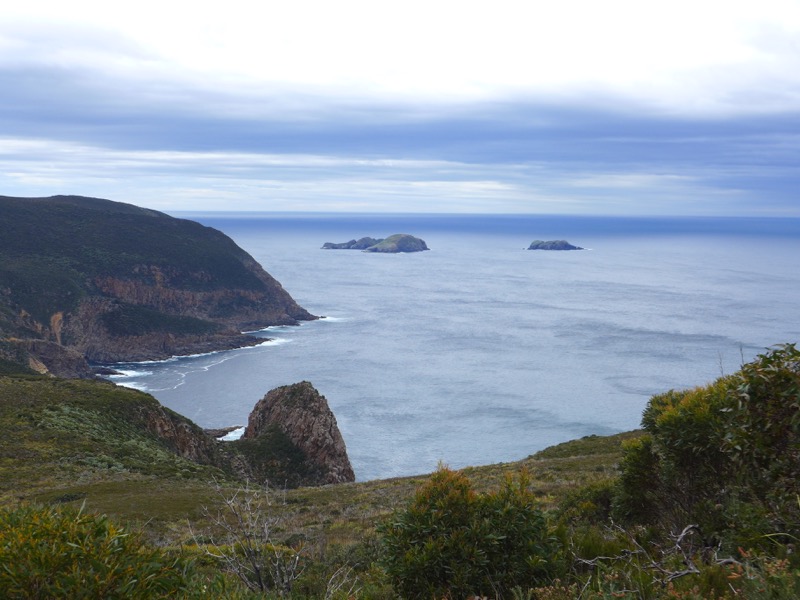
Eventually we were rewarded with a view of The Friars, large rocks in the Southern Ocean with a fur seal colony that we’d visit the next day.
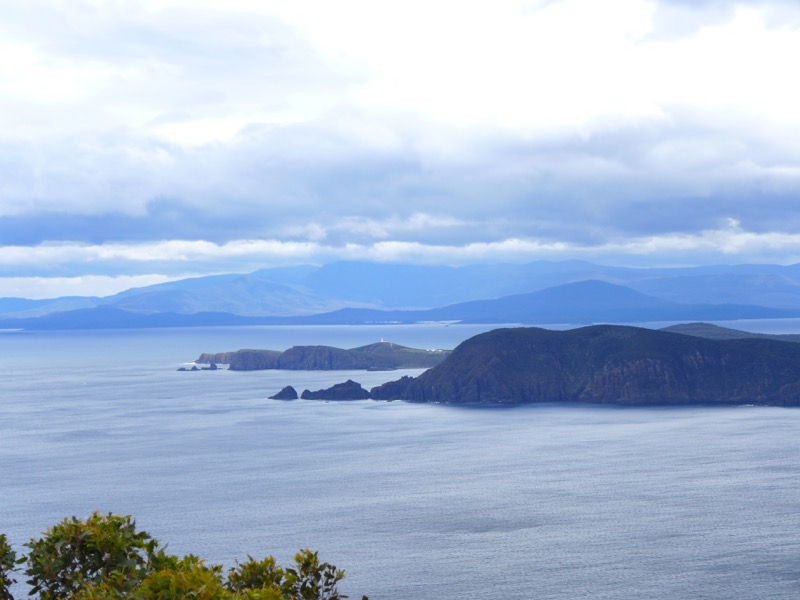
We could even see Cape Bruny Lighthouse far off in the distance.
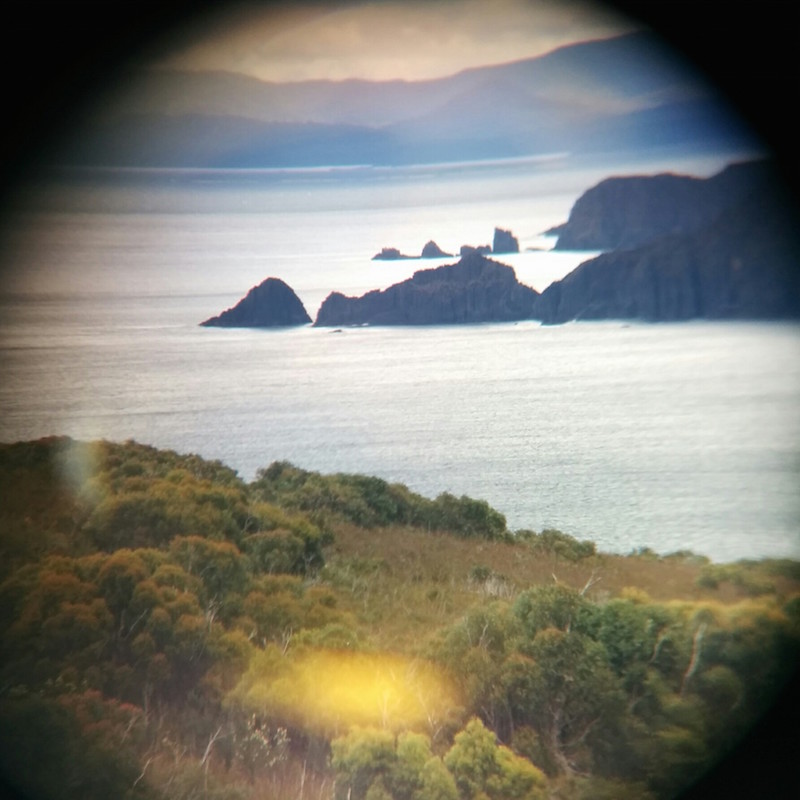
Mr Snook remembered to bring his binoculars and had some fun trying to take photos through them.
